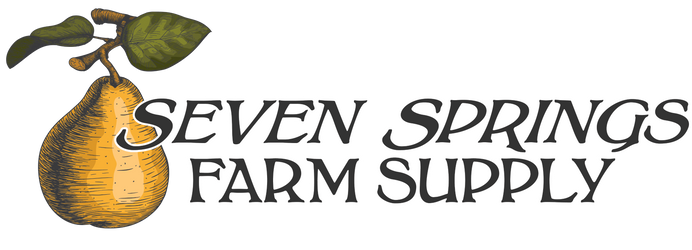
Bellair Farm Field Day
At the end of May we had the opportunity to visit Bellair Farm to learn about several soil and water conservation programs and tour the farm to see the operations and how they've put some of these programs into practice. Many thanks to farm managers Michelle and Nat for opening up the farm and spending the day with us.
We began with an overview of the various conservation programs and resources available to farmers through the local Soil & Water Conservation Districts, the Natural Resources Conservation Service (NRCS) and the Virginia Cooperative Extension and Small Farms Outreach Programs. We then heard about the history of the farm and how it has evolved into what it is today before heading outside.

In total, the Bellair farm property is over 800 acres, with about half of the acreage in open ground and food production. Along with 23 acres of seasonal vegetables, Bellair raises grass-fed cattle, pastured hogs, broiler chickens and laying hens. The vegetable and livestock operations are integrated, with the animals providing nutrients and seasonal rotations for the crop land. The farm distributes vegetables, meat and eggs through their CSA, local markets, and an on-farm retail barn. The CSA alone provides food for around 600 households. The farm employs between 20-30 people throughout the year.

The tour began at the greenhouse, where vegetable and flower transplants are started and grown until they're ready for the field or for sale to locals. We then visited the farm's two high tunnels, which were both planted to a summer cover crop of buckwheat and millet. This may seem unusual to many market or CSA farmers, as crops like cucumbers and tomatoes tend to be summer fixtures in tunnels, but Michelle and Nat explained that because of Bellair's large customer base and focused growing season, as well as their abundance of land, the best use of the tunnels is for winter-harvested greens and brassicas.

Next, we hopped on some hay wagons and into the back of a few pickup trucks and headed out to see the pastures and crop fields. We stopped in the shade to look at the cattle - a herd of about 65 really nice looking Red Devon and Devon/Angus crosses - and discuss the grazing strategies and considerations specific to the farm. The cattle are moved frequently and serve as both an income source for the farm, and as a means of deliberate land-management.

Bellair is in the process of developing silvopasture by strategically planting locust trees throughout some of their paddocks. Once established, the trees should provide shade for the cattle, habitat for birds and other wildlife, and a marketable timber crop. Many other types of trees have also been planted along perennial waterways to help stabilize the soil and serve as wildlife islands and corridors.

After talking about the pastures, grasslands, wildlife, and land management goals, we rode over to the crop fields where we looked at some beautiful early-season vegetables and discussed various irrigation, pest and disease management, nutrient management and land management goals, as well as the techniques, considerations and decisions that the farmers have made to move towards those goals each year. Bellair makes use of rotations with both cover crops (we saw both sorghum-sudangrass and summer max) and their 800-some laying hens in order to cycle nutrients in their vegetable fields, and their experience has shown that this approach is yielding healthier, more pest and disease resistant crops.

Before heading back to the barn to wrap up the day, we visited the laying hens, who were working their way across a field of mature winter rye. The hens are guarded by a pair of dutiful Great Pyrenees/Anatolian Shepherds, who made sure we knew how close was close enough.
Once back at the barn, Michelle and Nat generously offered everyone a "field day favor" - our choice of fresh vegetables - and made themselves available for further questions and discussions.
Many thanks to Bellair, their talented and dedicated staff, and to all of the agencies that worked with them to put together this beautiful and educational experience.

Leave a comment